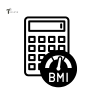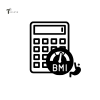Z-Score to Percentile
Convert standard scores to percentiles in a normal distribution
A Z-score measures how many standard deviations a value is from the mean. In a normal distribution:
- Z = -3 to -2: Bottom 2.5%
- Z = -2 to 2: Middle 95%
- Z = 2 to 3: Top 2.5%
- Z = 0: 50th percentile (mean)
RELATED TOOLS Understanding Z-Scores and Percentiles
A z-score, also called a standard score, tells you how many standard deviations a particular value is from the mean of a distribution. This statistical measurement is crucial for:
Comparing results from different normal distributions
Determining how unusual or typical a value is within its dataset
Standardizing scores for fair comparison
Percentiles indicate the percentage of data points that fall below a given value in a dataset. For example, scoring in the 85th percentile means you performed better than 85% of participants.
Key Characteristics of Z-Scores:
Positive z-scores = above the mean
Negative z-scores = below the mean
Z-score of 0 = exactly at the mean
Most values fall between -3 and +3 in a normal distribution
How to Convert Z-Score to Percentile
Method 1: Using Our Interactive Calculator
Our advanced z-score to percentile calculator provides the fastest and most accurate conversion:
Enter your z-score in the input field
Select whether you want a one-tailed or two-tailed calculation
View your precise percentile result
See the position visualized on a normal distribution curve
The calculator handles both positive and negative z-scores, providing results to four decimal places for maximum precision.
Method 2: Z-Score to Percentile Table
For quick reference without calculations, use this comprehensive table:
Z-Score to Percentile Conversion Guide:
-3.0 → 0.13% (Extremely low)
-2.5 → 0.62%
-2.0 → 2.28% (Very low)
-1.5 → 6.68%
-1.0 → 15.87% (Below average)
-0.5 → 30.85% (Low average)
0.0 → 50.00% (Average)
+0.5 → 69.15% (High average)
+1.0 → 84.13% (Above average)
+1.5 → 93.32%
+2.0 → 97.72% (Very high)
+2.5 → 99.38%
+3.0 → 99.87% (Extremely high)
Key Interpretations:
• Below -2.0 → Very rare/exceptional low values
• Between -1.0 and +1.0 → Typical/average range
• Above +2.0 → Very rare/exceptional high values
Method 3: Manual Calculation
For those who prefer doing the math themselves:
Use the standard normal distribution table
Find the area under the curve corresponding to your z-score
Convert this to a percentage
For negative z-scores, subtract from 100%
The mathematical formula is:
Percentile = (1 + erf(z/√2)) / 2 × 100
Reverse Calculation: Percentile to Z-Score
Sometimes you need to work backwards from a percentile to find the corresponding z-score. Here’s how:
Divide the percentile by 100 to get a decimal
Use the inverse normal distribution function
Find the z-score that corresponds to that cumulative probability
In Excel or Google Sheets, you can use:
=NORM.S.INV(percentile)
Example conversions:
90th percentile ≈ z = 1.282
95th percentile ≈ z = 1.645
99th percentile ≈ z = 2.326
ALSO CHECK Practical Applications
In Education:
Standardized test scoring (SAT, ACT)
Grading on a curve
Comparing student performance across different tests
In Healthcare:
Growth charts for children
Bone density measurements (T-scores)
Lab result analysis
In Business:
Quality control measurements
Six Sigma processes
Performance benchmarking
Common Mistakes to Avoid
Assuming symmetry – z=-1.0 is not the 1st percentile
Using z-scores for non-normal distributions
Rounding too early in calculations
Confusing one-tailed and two-tailed probabilities
Forgetting that percentiles represent cumulative area
Frequently Asked Questions
What does a z-score of 1.5 mean?
A z-score of 1.5 corresponds to approximately the 93.32nd percentile, meaning the value is higher than about 93% of the data.
How accurate are online converters?
Our calculator provides precision to four decimal places, matching professional statistical software.
Can I use this for sample data?
Yes, but ensure your sample size is adequate (typically n>30) and the data is normally distributed.
What’s the difference between percentile and percentage?
A percentage is a portion of 100, while a percentile indicates ranking within a distribution.




